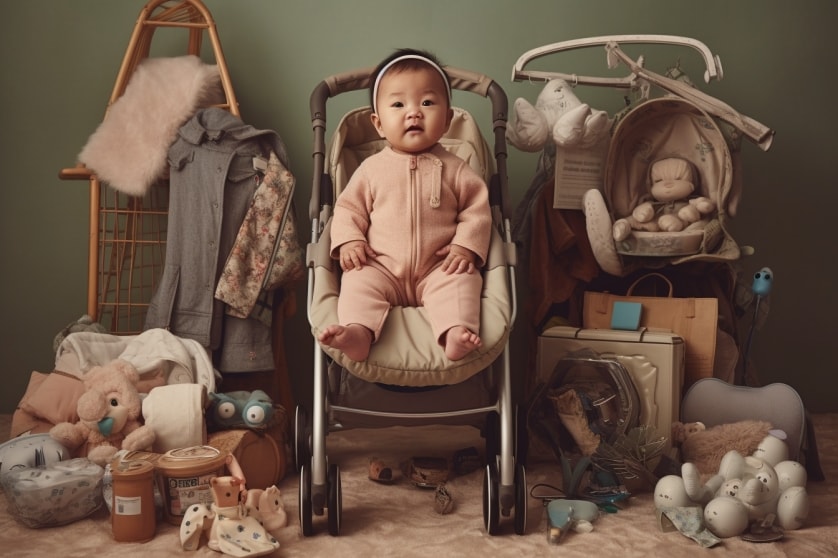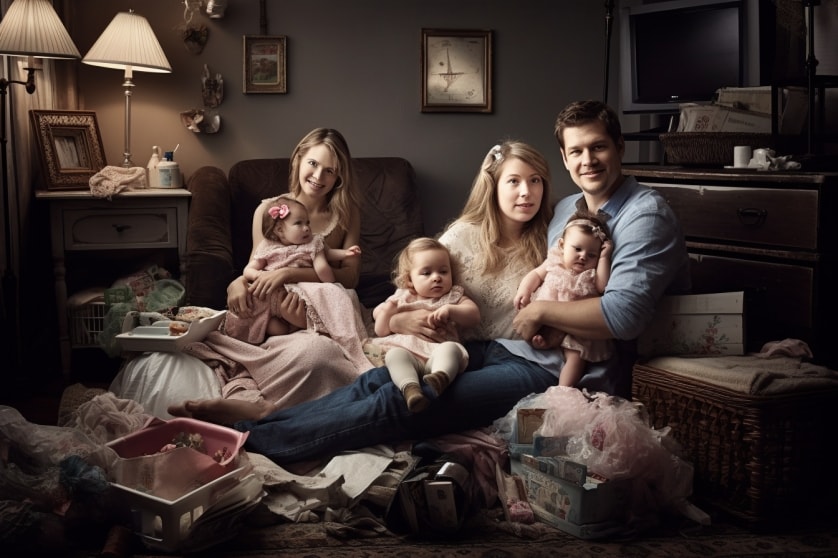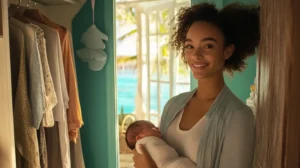Table of Contents
ToggleBreaking Down the Costs of Baby Gear: What You Really Need
Preparing for the arrival of a new baby is an exciting and overwhelming time. There’s so much to do and so much to buy, and it’s easy to get lost in a sea of options and price tags. As someone who has been through it all, I know firsthand how daunting the process can be. That’s why I’ve put together this guide to help you break down the costs of baby gear and determine what you really need.
When it comes to buying baby gear, it’s easy to get caught up in the hype and feel like you need every product on the market. But the truth is, there are only a few key items that you really need to provide a safe and comfortable environment for your baby. By prioritizing safety gear, considering your lifestyle, and avoiding unnecessary extras, you can save money without sacrificing quality.
As a new parent, I remember feeling like I needed every baby item on the market. I would spend hours researching different products and reading reviews, only to feel more confused and overwhelmed. But over time, I learned to trust my instincts and focus on what was truly essential for my baby’s wellbeing. I want to share that knowledge with you, so that you can approach the process of buying baby gear with confidence and ease.
In this guide, we’ll cover the key items you need to prioritize for safety, how to consider your lifestyle when making purchasing decisions, and how to avoid unnecessary extras that can drive up the cost without adding value. We’ll also provide tips on how to find good deals on secondhand gear, and how to properly sanitize items to ensure they’re safe for use.
Whether you’re a first-time parent or a seasoned pro, this guide will help you navigate the world of baby gear and feel confident in your choices. So, let’s get started!

1. Prioritize Safety Gear
When it comes to buying baby gear, safety should be your top priority. Your little one’s safety is the most important thing, and you want to make sure that you’re providing a safe environment for your baby to grow and thrive in. In this section, we’ll cover the safety gear that you absolutely need to have for your baby, and some tips for choosing safe products.
- Carseat: A carseat is one of the most important safety items that you’ll need for your baby. It’s crucial to have a properly installed carseat that fits your baby’s size and weight. Look for carseats that meet safety standards, and always make sure to follow the manufacturer’s instructions for installation.
- Crib: Your baby will spend a lot of time sleeping, so it’s important to have a safe and sturdy crib. Look for cribs that meet safety standards, and avoid using old or hand-me-down cribs that may not meet current safety regulations. Make sure the crib has a firm mattress that fits snugly against the sides, and avoid using any loose bedding or soft toys that could be a suffocation hazard.
- Baby monitor: A baby monitor is a great way to keep an eye on your baby while they’re sleeping or playing in another room. Look for monitors that have clear sound quality and a good range, and always make sure to follow the manufacturer’s instructions for use.
- Stroller: A stroller is an essential item for getting out and about with your baby. Look for strollers that have a sturdy frame, good suspension, and a secure harness system. Make sure the stroller is appropriate for your baby’s age and weight, and always follow the manufacturer’s instructions for use.
- Baby gate: Once your baby starts crawling and walking, it’s important to have a baby gate to block off stairs and other potentially dangerous areas. Look for gates that are sturdy and have a secure latch, and make sure they’re properly installed according to the manufacturer’s instructions.
When choosing safety gear for your baby, it’s important to do your research and choose products that meet safety standards. Look for products that have been tested and certified by independent organizations, and always follow the manufacturer’s instructions for use and installation. Don’t be swayed by fancy features or designs – safety should always be your top priority.
It’s also important to regularly check your baby’s gear for wear and tear, and replace any items that are damaged or no longer meet safety standards. This includes carseats, cribs, strollers, and other items that your baby uses regularly. By prioritizing safety gear and regularly checking for wear and tear, you can ensure that your baby is always in a safe and secure environment.

2. Consider Your Lifestyle
When it comes to buying baby gear, it’s important to consider your lifestyle and the needs of your family. What works for one family may not work for another, and there’s no one-size-fits-all solution when it comes to baby gear. In this section, we’ll cover some factors to consider when choosing baby gear based on your lifestyle.
- Travel: If you travel frequently or plan to take your baby on trips, you’ll want to consider a lightweight and portable stroller or a travel crib. Look for strollers that are easy to fold and store, and cribs that are compact and easy to set up.
- Outdoor activities: If you love spending time outdoors with your baby, you’ll want to consider a stroller with good suspension and all-terrain wheels, as well as a baby carrier or hiking backpack for when you want to go off-road. Look for carriers that distribute weight evenly and have good back support.
- Urban living: If you live in a city or have limited space, you’ll want to consider a compact stroller that’s easy to maneuver in tight spaces, as well as a compact and lightweight carseat. Look for gear that can be easily stored in small apartments or homes.
- Breastfeeding: If you plan to breastfeed, you’ll want to consider a comfortable nursing pillow and a breast pump. Look for pumps that are easy to use and clean, and consider investing in a hands-free pumping bra for added convenience.
- Working parents: If both parents work outside the home, you may want to consider a high-quality breast pump and bottles that can be easily stored and transported. Look for a pump with adjustable settings and a good battery life, and consider investing in a bottle warmer and sterilizer for added convenience.
When choosing baby gear, it’s important to think about your lifestyle and the activities you’ll be doing with your baby. Consider the type of terrain you’ll be navigating, the amount of space you have, and your daily routine. Don’t be swayed by trendy or expensive gear that doesn’t fit your needs. Instead, focus on finding gear that is functional, practical, and fits your lifestyle.
It’s also important to think about the long-term when it comes to baby gear. Some items, like strollers and carseats, may need to be replaced as your baby grows and their needs change. Consider investing in gear that can grow with your baby, or that can be easily adapted to fit different stages of development. By choosing gear that fits your lifestyle and thinking ahead to your baby’s changing needs, you can ensure that you’re getting the most out of your investment.

3. Don’t Forget the Essentials
While it’s important to prioritize safety and consider your lifestyle when buying baby gear, there are certain items that are essential no matter what your situation. Here are some of the must-have items that should be on every new parent’s shopping list:
- Diapers: Whether you choose cloth or disposable, diapers are a baby essential. Be sure to stock up before your baby arrives, as you’ll go through more than you think!
- Wipes: Along with diapers, wipes are a necessary item for keeping your baby clean and comfortable.
- Onesies and sleepers: Your baby will need plenty of these, as they’re comfortable and easy to change. Look for onesies and sleepers with snaps instead of zippers, as they’re less likely to irritate your baby’s skin.
- Swaddles and blankets: Swaddling can help your baby feel secure and calm, and blankets are essential for keeping your baby warm and cozy.
- Car seat: A car seat is an absolute must-have for transporting your baby safely. Look for one that’s easy to install and fits your baby’s weight and height requirements.
- Stroller: While not necessarily essential, a stroller can make your life a lot easier when you’re out and about with your baby. Look for one that’s easy to maneuver and fits your lifestyle.
Remember, these are just the essentials. There are plenty of other items that you may want or need, depending on your situation. But if you’re on a budget or just don’t want to be overwhelmed with baby gear, these are the items you absolutely need to have.
When it comes to buying baby gear, it can be easy to get caught up in all the cute and trendy items on the market. However, it’s important to focus on the essentials first and foremost. By prioritizing safety, considering your lifestyle, and making sure you have the necessary items, you’ll be well on your way to a happy and healthy baby.

4. Borrow or Buy Secondhand
When it comes to buying baby gear, one of the easiest ways to save money is to borrow or buy secondhand. While some parents prefer to buy everything new for their baby, there are plenty of high-quality, gently used items available that can save you a lot of money.
Here are some tips for buying baby gear secondhand:
- Ask friends and family: One of the easiest ways to find secondhand baby gear is to ask your friends and family members if they have any items they’re no longer using. You never know what you might be able to get for free!
- Check out consignment stores: Consignment stores are a great place to find high-quality, gently used baby gear. Be sure to check the items thoroughly for any signs of wear or damage before buying.
- Look online: Online marketplaces like Facebook Marketplace and Craigslist can be a goldmine for secondhand baby gear. Just be sure to take precautions when meeting with sellers, and always check the items in person before buying.
- Join online parenting groups: Online parenting groups are a great resource for finding secondhand baby gear in your area. You can also ask for recommendations for reputable sellers and consignment stores.
When buying secondhand baby gear, it’s important to prioritize safety. Make sure that any items you buy meet current safety standards and have not been recalled. Be sure to thoroughly clean and sanitize any items before using them, especially items like car seats and strollers.
Buying secondhand can not only save you money, but it can also be better for the environment by reducing waste. And if you do need to buy new items, consider donating or selling your gently used baby gear to someone else who can use it.
Remember, there’s no shame in buying secondhand baby gear. Your baby doesn’t know the difference between new and gently used items, and you’ll be able to save money that can be put towards other important expenses like diapers and formula. By following these tips, you’ll be able to find high-quality, affordable baby gear that will make your life easier and more enjoyable.

5. Avoid Unnecessary Extras
It’s tempting to splurge on all the cute and fancy baby gear out there, but it’s important to remember that not all of it is necessary. Here are some tips on how to avoid buying unnecessary extras:
- Make a list of the absolute essentials you need before you go shopping, and stick to it. This will help you avoid impulse buys and unnecessary extras.
- Consider the lifespan of the item. Will your baby outgrow it quickly? Is it something that you can easily do without?
- Think about the functionality of the item. Is it something that will be useful on a daily basis, or only occasionally?
- Research reviews and ask for recommendations from other parents. Sometimes, the most popular and expensive baby gear isn’t necessarily the best.
- Keep in mind that babies grow and develop quickly. What might seem like a must-have item one week may not be necessary the next.
Remember, it’s okay to treat yourself and your baby to some extras, but it’s important to prioritize your budget and avoid overspending on items that aren’t truly essential.
With these tips in mind, you can make informed decisions about what baby gear you really need, and avoid the stress and financial burden of overspending on unnecessary items.
Conclusion
Congratulations! You’ve made it to the end of our guide on breaking down the costs of baby gear. We hope you found it helpful in determining what you really need for your little one. Remember, every family’s needs and budget are different, so prioritize what’s important to you and your lifestyle.
As we’ve mentioned throughout the article, safety should always be your top priority. Don’t skimp on the essentials such as a safe car seat, crib, and baby monitor. However, you can save money by borrowing or buying secondhand items and avoiding unnecessary extras that you may not actually use.
As a final tip, consider creating a baby registry to help you keep track of the items you actually need and to help loved ones contribute to your baby gear fund. And don’t forget, the most important thing for your baby is love and attention, not fancy gadgets or expensive gear.
Thank you for reading and best of luck on your journey as a new parent!
Want to take your knowledge to the next level? Check out these must-read articles:
- The High Cost of Childcare: How to Find Affordable Options
- Juggling Work and Parenting: Tips for Finding Balance
Organize your baby’s wardrobe with our baby clothes closet organizer products! Our organizers are designed specifically for baby clothes. Get your baby’s clothes neat and tidy with our selection of organizers – shop now!
Hey there, are you craving a fresh perspective? Look no further! Feast your eyes on the awesome video below:
Beyond her professional achievements, Jessica is also a successful mother to a large and thriving family. Her firsthand experience in balancing financial responsibilities while raising multiple children gives her a unique perspective that resonates with her audience. As a mother, Jessica understands the financial challenges and pressures faced by families, and she brings a compassionate and relatable approach to her blogging. Through her blog, Jessica not only shares her financial expertise but also provides invaluable insights on how to foster financial well-being while building a strong and harmonious family foundation. Whether it's budgeting, saving for college, or teaching children about money, Jessica's relatable stories and practical tips make her an indispensable guide for individuals striving to achieve financial stability while nurturing a fulfilling family life.
- The New Mom’s Guide to Efficient Online Shopping - July 5, 2025
- First Birthday Philosophy: Meaningful Celebrations Without Excess - July 1, 2025
- Financial Planning for New Parents: Securing Your Family’s Future - June 16, 2025



